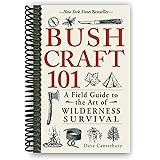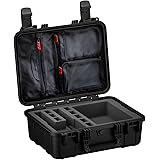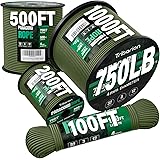The allure of the wilderness, with its pristine waters and untamed landscapes, calls to many. For those who seek a deeper connection to nature, few experiences rival the thrill of catching wild trout in a remote setting and then preparing it over a crackling campfire. As you saw in the accompanying short video, the simple joy of a “beautiful cutthroat” can encapsulate an entire adventure. This isn’t just about fishing; it’s about embracing a bushcraft lifestyle, where self-reliance and an appreciation for the natural world converge.
Venturing into the backcountry, perhaps to elevations approaching 11,000 feet as the video title suggests, transforms a fishing trip into an expedition. Here, the fish aren’t just a sport; they’re a vital part of a delicate ecosystem and, for the bushcrafter, a potential source of sustenance. Understanding the nuances of these wild environments and the species that inhabit them is key to a rewarding and responsible outdoor experience.
The Allure of Wilderness Trout Fishing
Wilderness trout fishing offers an escape from the ordinary. It’s about more than just the catch; it’s about the journey, the solitude, and the challenge. Anglers are often drawn to remote, high-altitude streams and lakes where native trout species thrive, undisturbed by the pressures of more accessible waters. These environments demand respect and a certain level of preparedness, making the reward of landing a vibrant wild trout all the more significant.
The clear, cold waters of mountain streams are the perfect habitat for these resilient fish. Each cast into an untouched pool or riffle is an act of hope and patience, a testament to the angler’s dedication. The sheer beauty of the surroundings, often with majestic peaks and ancient forests as a backdrop, enhances every moment. This profound connection to an untouched landscape is a primary driver for those who pursue bushcraft angling.
Identifying the Magnificent Cutthroat Trout
The cutthroat trout, specifically mentioned in the video, is a truly iconic species of Western North America. Its name derives from the distinctive red or orange dash found in the fold beneath its lower jaw, a striking mark that sets it apart. These beautiful fish typically display an olive-green to yellowish-brown body, often with scattered black spots that are more numerous towards the tail. Their coloration can vary significantly depending on their specific subspecies and habitat.
Cutthroat trout are native to a wide range of environments, from coastal rivers to high-elevation mountain lakes and streams. They are known for their opportunistic feeding habits, readily taking a variety of insects and small baitfish. Understanding their preferred habitats—often cold, clear, well-oxygenated waters with plenty of cover—is crucial for successful high-country fishing. Different subspecies, like the Yellowstone cutthroat or Colorado River cutthroat, possess unique traits and occupy specific geographical ranges, each contributing to the rich biodiversity of our wild trout fisheries.
Essential Gear for Bushcraft Angling in the Backcountry
When heading into the wilderness for a catch and cook adventure, minimalism and versatility are paramount. Every item in your pack must justify its weight. While the video snippet doesn’t show gear, a bushcraft angler typically prioritizes lightweight, durable equipment tailored for remote environments.
- Fishing Rod & Reel: A lightweight, packable rod (often a 4- or 5-piece fly rod or a compact spinning rod) paired with a reliable reel is essential. Consider the size of the water you’ll be fishing; smaller streams might call for a shorter, more delicate setup.
- Line & Lures/Flies: Bring a selection of appropriate line weights and a variety of lures or flies that mimic local insect hatches. Small spinners, spoons, and an assortment of dry flies, nymphs, and streamers are often effective for wild trout.
- Basic Tackle Kit: Essential items include extra leader and tippet material, split shot, indicators, forceps or pliers for hook removal, and a small knife.
- Navigation & Safety: A map, compass, or GPS device, along with a first-aid kit, fire-starting materials, and emergency shelter, are non-negotiable for wilderness excursions.
- Food Preparation: A lightweight cooking pot, a small skillet, a sharp knife for cleaning fish, and basic seasonings are all you need for a stream-to-skillet meal.
- Shelter & Sleep System: A tarp, lightweight tent, or bivy, along with a sleeping bag and pad, are crucial for comfortable overnight stays in challenging conditions.
Ethical Considerations for Catching and Cooking Wild Trout
Participating in catch and cook wilderness fishing carries a significant responsibility. Ethical angling and respect for the environment are foundational principles of bushcraft. The goal is not just to take, but to understand and contribute to the health of the ecosystem.
Before you even cast a line, it is vital to research and adhere to all local fishing regulations. These rules exist to protect fish populations and ensure sustainable practices. Understand bag limits, size restrictions, and any seasonal closures. For wild trout, especially native species, selective harvesting is often recommended. This means keeping only what you need and releasing the rest, particularly larger breeding fish that are crucial for population health. Handle any fish you intend to release with wet hands, minimizing contact and returning them to the water quickly.
Beyond the fish, practicing Leave No Trace principles is paramount. Pack out everything you pack in, including fish entrails, which should be disposed of far from camp and water sources. Minimize your impact on the stream banks and surrounding vegetation. Your presence in these remote areas should leave no lasting footprint, preserving the pristine nature for future generations of anglers and adventurers.
Mastering Wilderness Cooking: From Stream to Skillet
The true reward of a successful wilderness fishing trip often culminates in preparing your fresh catch over an open fire. There’s an unmatched satisfaction in transforming a wild trout, caught just moments before, into a delicious meal using minimal tools and natural heat sources. The flavors of a perfectly cooked fish, seasoned simply with salt and pepper, are enhanced by the crisp mountain air and the ambiance of a crackling campfire.
Cleaning your fish carefully and efficiently is the first step. Once gutted and scaled, a simple preparation often yields the best results. You might choose to cook the trout whole, directly on coals, or in a lightweight skillet. Wrapping fish in foil with a few foraged herbs (if safely identified) and placing it in the embers can steam it to perfection. Alternatively, a lightly oiled skillet over a direct flame offers a quick and savory pan-fried experience. The key is to avoid overcooking; wild trout, with its delicate texture, cooks quickly.
For an authentic bushcraft experience, consider crafting a simple cooking setup. A green stick sharpened and used to skewer the fish over a small fire, or a rock slab heated and used as a primitive griddle, can elevate the entire cooking process. The simplicity of these methods connects you directly to ancient traditions of foraging and feasting in the wild.
Sustainable Practices for Protecting Our Wild Trout Fisheries
The health of wild trout populations is intrinsically linked to the health of their habitats. As stewards of these incredible ecosystems, our practices in the wilderness directly impact their future. Protecting wild trout fisheries means understanding and actively participating in their conservation.
One critical aspect is protecting water quality. Avoid using soaps or detergents near water sources and be mindful of any runoff from your campsite. Erosion control along stream banks is also vital; stick to established trails and minimize disturbance to riparian vegetation. Furthermore, preventing the spread of invasive species, such as whirling disease or non-native fish, is crucial. Always clean your gear thoroughly before moving between different bodies of water.
Supporting conservation efforts, whether through participation in volunteer cleanups or advocating for protective legislation, ensures that these pristine wilderness areas and their magnificent wild trout continue to thrive. The enduring magic of catching a “beautiful cutthroat” in the backcountry depends on our collective commitment to its preservation.











